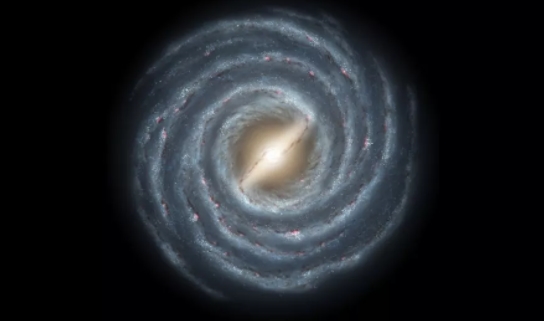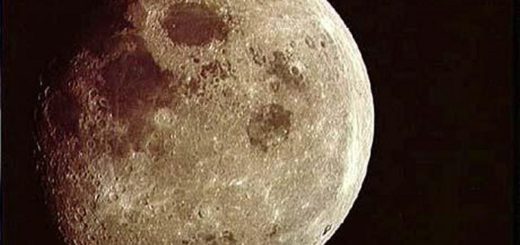Dark matter is putting the brakes on our Milky Way galaxy’s spin

The Milky Way rotates at a whopping 130 miles (210 kilometers) per second, but a new study has found that dark matter has slowed the rotation of its bar by at least 24% since its formation nearly 14 billion years ago.
“Astrophysicists have long suspected that the spinning bar at the center of our galaxy is slowing down, but we have found the first evidence of this happening,” study co-author Ralph Schoenrich, an astrophysicist at University College London, said in a statement.
These new findings not only shed light on the rotation of the Milky Way but also provide an insight into the nature of one of the most elusive materials in the universe — dark matter.
The Milky Way is a barred spiral galaxy with a thick band of stars in the center and large pivoting arms stretching out across the cosmos. Scientists think that a halo of dark matter surrounds the Milky Way, extending out far beyond its visible edge, as occurs at other galaxies.
In the new study, researchers used data from Gaia, a European Space Agency mission mapping the positions of billions of stars, to study the Hercules Stream, a thick cluster of stars that revolve around the Milky Way at the same rate that the galactic bar itself spins.
Because the stars in the Hercules Stream are gravitationally trapped by the pivoting bar, slowing down the bar’s rotation would cause the stars to creep outward to keep their orbits in sync with the bar’s spin.
The researchers found evidence of such an outward cosmic migration when they investigated the chemical makeup of the stars. The Hercules Stream stars are rich in heavier elements, suggesting that these stars formed closer to the galactic center, where stars are about 10 times richer in metals compared to those in the galactic suburbs.
From these observations, the researchers concluded that the galactic bar had indeed slowed by at least 24%. Raising the question — what has the power to put the brakes on an entire pivoting galaxy?
“The counterweight slowing this spin must be dark matter,” Schoenrich said in the statement. “Until now, we have only been able to infer dark matter by mapping the gravitational potential of galaxies and subtracting the contribution from visible matter.”
Astronomers believe that dark matter shrouds the Milky Way — and other galaxies — in an elusive halo that extends far out into space. Scientists have estimated that there is five times as much dark matter in the universe as visible matter.
Though apparently abundant throughout the cosmos, the nature of dark matter remains unknown. But findings published in this study are helping to piece together this mysterious dark matter puzzle.
“Our research provides a new type of measurement of dark matter — not of its gravitational energy but of its inertial mass (the dynamical response), which slows the bar’s spin,” Schoenrich said. “Our finding also poses a major problem for alternative gravity theories — as they lack dark matter in the halo, they predict no, or significantly too little slowing of the bar.”
Alternative gravity theories — such as modified Newtonian dynamics — disregard the notion of dark matter. They instead attempt to explain why the behavior of galaxies doesn’t fit within the predictions of general relativity by making tweaks to Einstein’s theory of general relativity.
The results of this study were published in the Monthly Notices of the Royal Astronomical Society.
Follow us on Twitter @Spacedotcom and on Facebook.
Daisy Dobrijevic
Daisy is a staff writer for All About Space magazine. She holds a Master’s in Environmental Science and has recently completed a PhD in plant physiology. During her PhD Daisy completed an editorial internship with the BBC Sky at Night Magazine and has previously worked at the National Space Centre in Leicester, UK.



 Creators of mankind
Creators of mankind Description of “Tall white aliens”
Description of “Tall white aliens” Where they came from?
Where they came from? About hostile civilizations
About hostile civilizations The war for the Earth
The war for the Earth “Tall white aliens” about eternal life
“Tall white aliens” about eternal life Video: “Nordic aliens”
Video: “Nordic aliens” Aliens
Aliens Alien encounters
Alien encounters The aliens base
The aliens base UFO
UFO Technology UFO
Technology UFO Underground civilization
Underground civilization Ancient alien artifacts
Ancient alien artifacts Military and UFO
Military and UFO Mysteries and hypotheses
Mysteries and hypotheses Scientific facts
Scientific facts


















